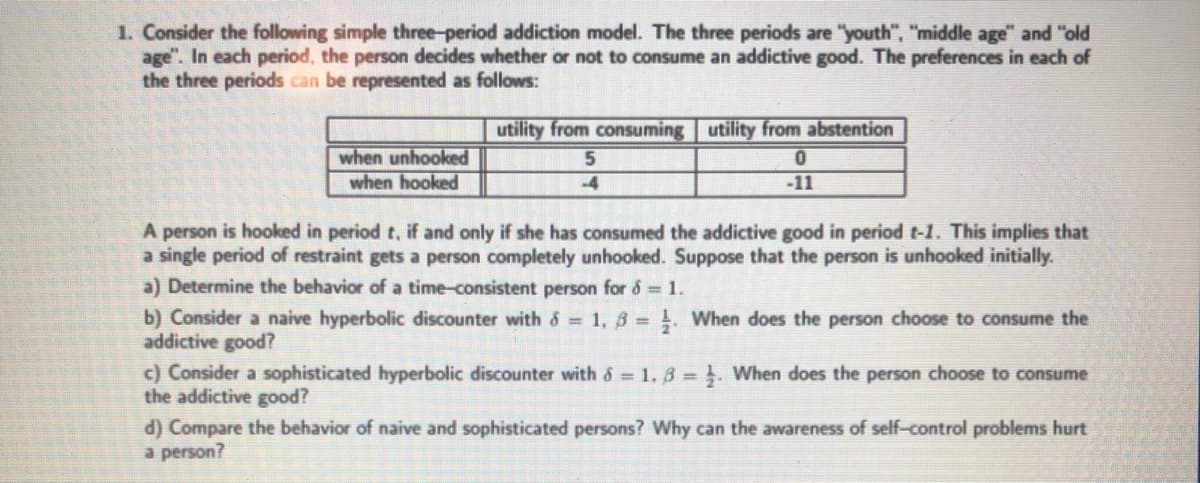cannot figure out how to start this problem for my behavioral economics course. I would appreciate any help offered on how to start with parts a,b, and/or c
cannot figure out how to start this problem for my behavioral economics course. I would appreciate any help offered on how to start with parts a,b, and/or c
Chapter17: Capital And Time
Section: Chapter Questions
Problem 17.13P
Related questions
Question
I cannot figure out how to start this problem for my behavioral economics course. I would appreciate any help offered on how to start with parts a,b, and/or c

Transcribed Image Text:1. Consider the following simple three-period addiction model. The three periods are "youth", "middle age" and "old
age". In each period, the person decides whether or not to consume an addictive good. The preferences in each of
the three periods can be represented as follows:
utility from consuming utility from abstention
when unhooked
when hooked
5.
-4
-11
A person is hooked in period t, if and only if she has consumed the addictive good in period t-1. This implies that
a single period of restraint gets a person completely unhooked. Suppose that the person is unhooked initially.
a) Determine the behavior of a time-consistent person for 6 = 1.
b) Consider a naive hyperbolic discounter with 6 = 1, 3 = . When does the person choose to consume the
addictive good?
c) Consider a sophisticated hyperbolic discounter with 6 1. 3 = }. When does the person choose to consume
the addictive good?
d) Compare the behavior of naive and sophisticated persons? Why can the awareness of self-control problems hurt
a person?
Expert Solution
This question has been solved!
Explore an expertly crafted, step-by-step solution for a thorough understanding of key concepts.
Step by step
Solved in 2 steps with 1 images

Knowledge Booster
Learn more about
Need a deep-dive on the concept behind this application? Look no further. Learn more about this topic, economics and related others by exploring similar questions and additional content below.Recommended textbooks for you


Principles of Microeconomics
Economics
ISBN:
9781305156050
Author:
N. Gregory Mankiw
Publisher:
Cengage Learning



Principles of Microeconomics
Economics
ISBN:
9781305156050
Author:
N. Gregory Mankiw
Publisher:
Cengage Learning


Principles of Economics 2e
Economics
ISBN:
9781947172364
Author:
Steven A. Greenlaw; David Shapiro
Publisher:
OpenStax